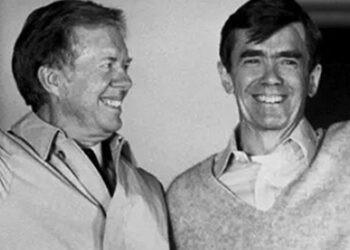Iranians had widely expected Rafsanjani to be dumped from his post and sent into obscure retirement. But Kha-menehi kept him on in the post that officially ranks as the fifth spot in the governmental hierarchy.
Khamenehi did, however, dump five other council members, mostly reformists, and replace them with five new faces when he issued his decree naming the 36 members of the council.
In 2009, Rafsanjani was dropped as one of the leaders of Friday congregational prayers in Tehran when he objected to the repression of those protesting the announced results of the 2009 presidential elections. Last year, he was forced out as chairman of the Assembly of Experts, the 86-cleric body that chooses the Supreme Leader when that post falls vacant. Recently, his website, his main means of distributing his opinions and analyses these days, was shut down by the Judiciary. The chairmanship of the Expediency Council was the sole official post remaining to him. He has been the chair since the council was created in 1988.
In the official hierarchy of the Islamic Republic, the Supreme Leader ranks first followed by the president. Next in line are the speaker of the Majlis and chairman of the Judiciary.
In fifth place is the chairman of the Expediency Council, which has two roles. When the Majlis objects to a veto of legislation by the Council of Guardians, the Expediency Council can step in and resolve the dispute any way it chooses. More broadly, the Expediency Council is tasked to advice the Supreme Leader on broad policy matters and help him set long-term policy, such as by composing Iran’s 20-year vision statement.
In 2006, Khamenehi also tasked the Expediency Council to take on a management role and discipline government agencies that strayed from long-term policy. But Rafsanjani has complained publicly that Khamenehi neutered that role by refusing to approve the by-laws adopted by the Expediency Council to create its control mechanisms.
There is considerable speculation as to why Khamenehi retained Rafsanjani in the chairmanship. One analyst said he believed many prominent clerics who do not agree with Rafsanjani on many things objected to purging him, viewing Rafsanjani as a major figure in the regime.
Others said dumping Rafsanjani would have been seen widely as a further power grab by Khamenehi, whom many complain has centralized far too much power in his own office since 2009. They suspect Khamenehi decided to keep Rafsan-jani, not as a powerful figure beside him, but rather as window dressing.
Sadeq Zibakalam, a political science professor at the University of Tehran, wrote in the reformist daily Sharq that, regardless of Khamenehi’s rationale, the re-appointment would be seen as support for moderation over radicalism.
The membership of the council has always represented the full range of accepted ideology within the Islamic Republic. That has been its strength. When it adopts a policy position by consensus, that brings on board all shades of opinion within the establishment.
At least until now.
Four of the five dumped by Khamenehi were the four key reformist-minded members of the body apart from Rafsanjani himself. They are:
• Mir-Hossain Musavi, prime minister during the 1980s and losing presidential candidate in 2009. He has been under house arrest the past year and unable to attend meetings of the council.
• Mohammad Mohammadi-Reyshahri, a cleric and the regime’s first intelligence minister. He then headed the clerical court that was used to silence opposition to the Islamic Republic within the clergy. He was a harsh radical in the early years of the regime. But like many others, he moderated over the years and soon became a vocal reformist—apparently too vocal.
• Bijan Namdar-Zanganeh, who was President Mohammad Khatami’s oil minister. When Mahmud Ahmadi-nejad first ran for president in 2005, Namdar-Zanganeh was the focus of his loudest attacks, those against the “oil mafia” that Ahmadi-nejad said was bleeding the country dry. After Ahmadi-nejad was elected, Namdar-Zanganeh continued as a fervent reformist. While he was never in the front lines, he was one of the few reformists on the Expediency Council.
• Mohammad Hashemi, younger brother of Rafsanjani. He headed state broadcasting in the 1980s and then was an appointed vice president under his brother’s presidency in the 1990s. He is a graduate of the University of California at Berkeley. His removal was a pointed reminder to Rafsanjani of the former president’s isolated position.
• Mohammad Emami-Ka-shani, one of the Friday prayer leaders in Tehran. He is no reformist. Why he was removed is unclear, but he has apparently done something to draw Kha-menehi’s ire. Emami-Kashani is 95 years old, but is still able to stand at length and lead Friday prayers.
Khamenehi did not make a clean sweeep of reformists, however. Many were surprised that he re-appointed Hassan Rohani, who was secretary of the Supreme National Security Council under President Khatami and tried to negotiate a compromise over the nuclear issue, as well as Majid Ansari, who was an active reformist in the Majlis until defeated in the conservative sweep of 2004. He then became one of Khatami’s appointed vice presidents. Both Rohani and Ansari are clerics.
The five men dumped from the Expediency Council have been replaced by an eclectic collection of five new faces
• Ahmad Vahidi, a brigadier general and the current defense minister. He is only the second serving military officer on the council. The other is Hassan Firuzabadi, the senior-most officer as chairman of the Joint Staff of the armed forces ever since 1989.
• Gholam-Reza Mesbahi-Moqaddam, the one cleric among the new appointees. He came in 16th Tehran in the recent Majlis elections, putting him in the run-offs. He was endorsed by the conservative mainstream United Principleist slate, and not endorsed by the more radical slate sponsored by ultra-rightist Mohammad-Taqi Mesbah Yazdi, who has, rather pointedly, been kept off the Expediency Council, although he represents a body of revolutionary thought.
• Mohammad-Hossain Saffar-Harandi, who was the culture minister until shortly after the 2009 elections when he opposed Ahmadi-nejad’s decision to name his close buddy, Esfandiar Rahim-Mashai, as first vice president. It remains unclear whether Saffar-Harandi was fired or quit. But his appointment is broadly seen as a slap at Ahmadi-nejad.
• Sadeq Vaezzadeh, formerly the vice president under Ahmadi-nejad handling science and technology. Vaezzadeh drafted and pushed hard for a plan, since adopted, for Iran to gain science mastery. He is a professor of electrical engineering at the University of Tehran and a graduate of Queen’s University in Canada.
• Hossain Mohammadi, a little known figure. He is not the soccer player named Hossain Mohammadi. He is a member of Khamenehi’s personal staff. His appointment suggests Khamen-ehi wants someone on the council who can keep watch over it and report back any untoward behavior by council members.
Altogether, Khamenehi named 36 members to the council—14 clerics and 22 laymen—all males and all Shias. In addition, there are several ex-officio members, such as the president, who hasn’t attended meetings the last few years, and the speaker of the Majlis.
Observers noted, however, that Majlis Speaker Ali Larijani was also one of the 36 named members. That fueled widespread speculation that Larijani will not stay as speaker after May when the new Majlis is seated. There has been some irritation with Larijani and criticism that he is too dictatorial. Four years ago, he replaced Gholam-Ali Haddad-Adel as speaker when Haddad-Adel was criticized as being too soft in his 2004-08 term. Many now expect Haddad-Adel to return as speaker.














